External links
| Africa |
| ||||||||||
|---|---|---|---|---|---|---|---|---|---|---|---|
| Asia |
| ||||||||||
| Europe |
| ||||||||||
| Americas |
| ||||||||||
| Oceania | |||||||||||
This article includes a film-related list of lists.
Film production in the Cinema of Argentina increased strongly in the mid to late 1930s.
The incorporation of sound had a great impact. In 1930 Adiós Argentina became the first Argentine film to have a soundtrack. The film spawned star actresses such as Libertad Lamarque and Ada Cornaro who both debuted in the film.
In 1931 José A. Ferreyra directed Muñequitas porteñas, and was the first Argentine spoken film, with Vitaphone synchronisation. That year El cantar de mi ciudad was directed by José A. Ferreyra as early directors made the transition to sound.
Around 1933 the Movietone arrived and it allowed both voice and music in motion pictures. Also, the first two Argentine cinematographic studios were created: Argentina Sono Film was founded by Ángel Mentasti, and Lumiton was created by Enrique Telémaco Susini, César José Guerrico and Luis Romero Carranza.
The first disc-less sound film was Tango (1931), directed by Luis Moglia Barth and a key film of the period was the tango film Dancing (1933 film) which saw the birth of a number of Argentine stars such as Amelia Bence and Tito Lusiardo and other actors such as Tita Merello, Floren Delbene, Aída Alberti and Armando Bo began to gain popularity.
Successful films were: El alma del bandoneón, Mario Soffici, 1935; La muchachada de a bordo, Manuel Romero, 1936; Ayúdame a vivir , 1936; Besos brujos (1937) and La vuelta al nido (Leopoldo Torres Ríos, 1938 and Así es la vida (1939) directed by Francisco Mugica.
Manuel Romero in particular was one of the most prominent directors of the mid to late 1930s and consistently worked in comedy based films often with rising Argentine star Luis Sandrini in films such as Don Quijote del altillo .
Films produced in Argentina in the 1930s ordered by year of release on separate pages:

Don Alvarado was a Mexican-American actor, assistant director and film production manager.

Cinema of Argentina refers to the film industry based in Argentina. The Argentine cinema comprises the art of film and creative movies made within the nation of Argentina or by Argentine filmmakers abroad.
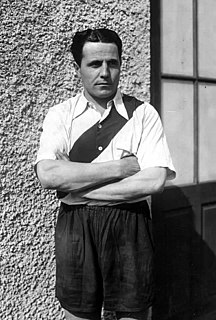
Bernabé Ferreyra was an Argentine association football forward. He was one of the first professional players in Argentine football to reach great popularity, to the point that he had a movie biography. Ferreyra ranks 6th. among the all-time Primera División top scorers, with an average of almost 1 goal per match (233/234). At the end of his active career in 1939, Ferryra had achieved a record of having more goals than matches played.

Francisco Múgica was an Argentine film director, film editor and cinematographer. He was born and died in Buenos Aires.

José A(gustín) Ferreyra, popularly known as "Negro Ferreyra", was an early Argentine film director, screenwriter and film producer. He was also sometimes credited as production designer.

Mario Soffici was an Argentine film director, actor and screenwriter of the classic era.

Laura Ana "Tita" Merello was a prominent Argentine film actress, tango dancer and singer of the Golden Age of Argentine Cinema (1940–1960). In her 6 decades in Argentine entertainment, at the time of her death, she had filmed over thirty movies, premiered twenty plays, had nine television appearances, completed three radio series and had had countless appearances in print media. She was one of the singers who emerged in the 1920s along with Azucena Maizani, Libertad Lamarque, Ada Falcón, and Rosita Quiroga, who created the female voices of tango. She was primarily remembered for the songs "Se dice de mí" and "La milonga y yo".

Luis Moglia Barth was an Argentine film director and screenwriter, and one of the influential directors in the Cinema of Argentina of the classic era. He directed some 30 films between 1927 and 1959, often screenwriting for his pictures. He died in Buenos Aires, aged 81.

Manuel Romeo was an Argentine film director, screenwriter, dramatist and score composer, and one of the influential directors in the cinema of Argentina of the classic era. He directed and wrote over 50 films between 1931 and 1951 even composing the musical scores for several.
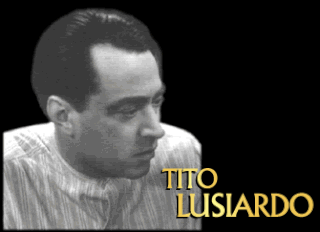
Tito Lusiardo was an iconic Argentine film actor and tango singer of the classic era.
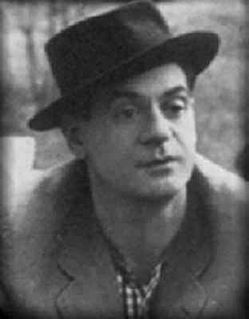
Luis Sandrini was a prolific Argentine comic film actor and film producer. Widely considered one of the most respected and most acclaimed Argentine comedians by the public and critics. He has made over 80 appearances in film between 1933 and 1980.
Martín Garralaga was a Spanish film and television actor who worked in Hollywood from the 1930s through the 1960s. He was married to opera singer and actress Rosa Rey.
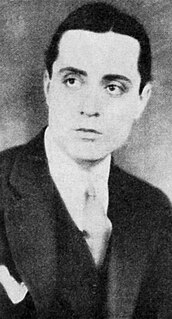
Manuel Granada was an Argentine actor who appeared in American, Spanish, Argentine and Mexican films. For the first half of his career, he worked under the names Paul Ellis and Manuel Granado.
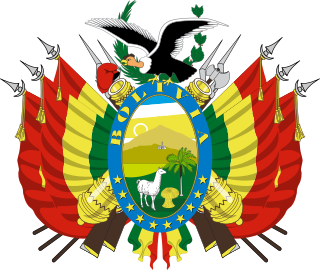
The Foreign Minister of Bolivia is the head of the Ministry of Foreign Affairs. The current minister is Rogelio Mayta, who was appointed by president Luis Arce in November 2020.
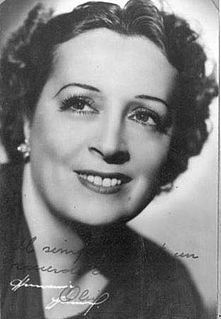
Olinda Bozán was an Argentine film actress and comedian of the Golden Age of Argentine Cinema (1940–1960). Born into a circus family, she acted on the vaudeville circuit, and performed in silent and sound movies. She was trained by the Podestá brothers, one of whom she married, who have one of the most prestigious Argentine acting awards named for them. Bozán' appeared in 75 films and was considered one of the best comic actors of Argentine cinema in the 20th century.

Lumiton was a film production company founded in Argentina in 1932 at the start of the golden age of film in that country. Its lowbrow, populist films appealed to local audiences and were highly successful in Argentina and throughout Latin America. It was the main competitor to Argentina Sono Film in the 1940s. After World War II (1939–45) Lumiton faced increased government regulation, rising costs and loss of audiences to more sophisticated Hollywood productions. The company was forced to close in 1952.

¡Tango! is a 1933 Argentine musical romance film, the first film to be made in Argentina using optical sound technology Many existing stars of the Argentine stage and radio appeared in the film, but its success was limited due to poor sound quality and weak acting. ¡Tango! established a formula that would be used by many subsequent tango films.

Sabina Olmos (1913–1999) pseudonym of Rosa Herminia Gómez Ramos was an Argentine film actress of the Golden Age of Argentine Cinema (1940–1960).

María Elena Lucena Arcuri was an Argentine film actress of the Golden Age of Argentine Cinema (1940–60). She began her career in radio in the 1930s and reached her greatest success with the role of "Chimbela", which was later depicted in film, theater and television. Her extensive film career includes approximately 50 films, including notable performances in Chimbela (1939) and Una noche cualquiera (1951). During the 1940s, she participated in films with comedians like Pepe Arias, Pepe Iglesias "El Zorro", Niní Gambier, Mirtha Legrand and Carlos Estrada. Her most acclaimed film work occurred in Elvira Fernández, vendedora de tienda (1942) by Manuel Romero, Cinco besos by Luis Saslavsky and La Rubia Mireya for which she received the 1948 Best Comedy Actress Award from the Argentine Film Critics Association.
Antonio Botta was a Spanish language dramatist and screenwriter. He was born in Brazil, but it was in Argentina that he built his career and made his name.